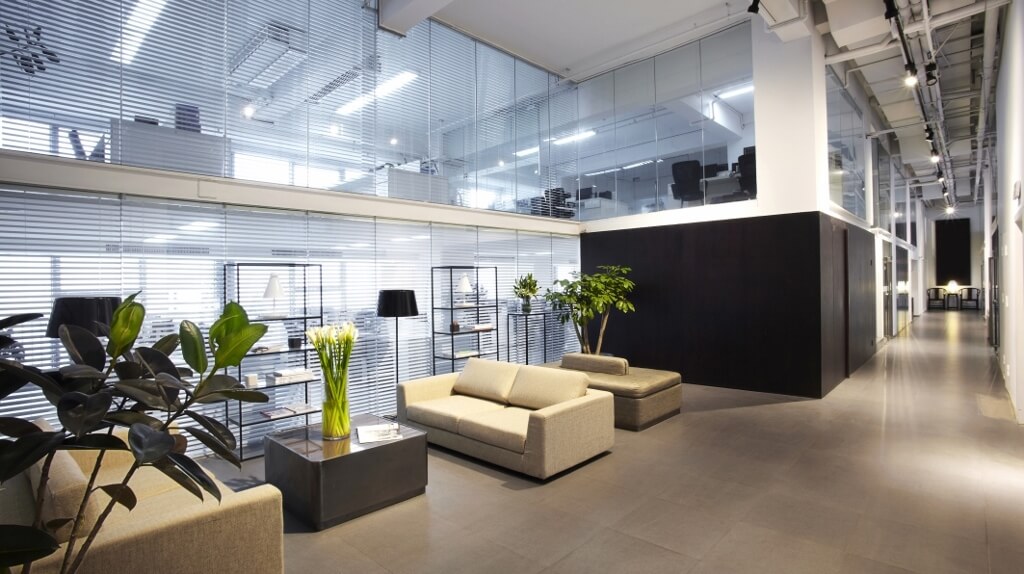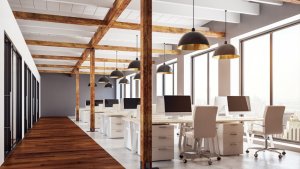Decision makers should embrace technology that will bring their office into the future now, says Paul Statham, founder of workplace solutions firm Condeco Software.
The Office Of The Future Is Already Here
Decision makers should embrace technology that will bring their office into the future now, says Paul Statham, founder of workplace solutions firm Condeco Software.

The office has changed beyond recognition. Within a generation the cigarette-smoke-filled, paper world has been streamlined and replaced by one of personal computers, tablets and the cloud.
As we move further away from the traditional hierarchical structures of the past, to a much flatter organisation, the need for new technological solutions to facilitate this framework becomes more pressing. However, the challenge facing offices to modernise and become ‘future-proof’ is not as daunting as it sounds.
With the recent Gartner prediction that there will be 6.4 billion connected things by the end of 2016, the widely-touted Internet of Things (IoT) will continue to drive change in the workplace. Gartner’s predictions are striking, and some businesses are anxious about the scale of technological change.
Business leaders should rest assured that the office of the future is not an entirely alien landscape. IoT technologies are designed to bring office spaces into alignment with the ways in which employees are using them – rather than forcing teams to change their working habits to suit the office. At Condeco, we have already been using IoT technologies in our clients’ workplaces, enabling us to collect real-time data to examine how an office is being used.
This data contributes to the development of space in line with employee activity. When, for instance, global technology company Ricoh turned their ‘dumb’ office into a ‘smart’ one by connecting it up with our occupancy sensor, Sense, they were able to understand in real-time how their meeting rooms and desks were being used.
This measurement showed that meeting rooms were used only 39 per cent of the time. Providing even more detail, the sensors revealed that the largest meeting room that seated ten people was usually only occupied by three people or less. Quite often only one person was using the room for the entire day as an office, which illustrated to Ricoh that their workspace required more small private areas.
Meanwhile, desk data captured by Condeco Sense also indicated low average desk utilisation of below 30 per cent, with busiest periods peaking at only 51 per cent, and 58 per cent of desks used for under 20 per cent of the time. Connecting their workplace up with IoT connected devices allowed Ricoh to understand their employees’ working habits, and highlighted the need to transform their space in order to utilise resources more efficiently.
Internet of Things-based workplace technology also highlighted the unresponsiveness of Ricoh’s offices to changing employee habits, prompting adaptations which were designed to create a workplace that would be more suited to employee activity. Ricoh ensured, for example, that they provided many more private areas for people to work in, rather than taking up entire meeting rooms for the day.
Connected offices provide insight which enables personalised workplace design, tailored by company and even by department. The Internet of Things will work to make the office of 2016 more suited to the needs of each company and their team members.
Dynamic working spaces, which are responsive to the activities of employees, will be a growing trend in the next year, as UK firms face up to lagging productivity and try to increase engagement. With the UK behind other G7 nations in terms of productivity, business leaders are searching for ways in which to unlock their employees’ creativity and boost collaboration.
The productivity puzzle is a complex one, but the viewpoint of workplace experts all point to the fact that in companies with dreary cultures, employee energy and innovation can suffer. Successful global companies have agile workplaces that encourage the ‘serendipity effect’, enabling employees to meet new people and share ideas freely.
This may sound like an impossible task, but our work in Auto Trader’s offices shows that even small changes can have a positive effect on workplace culture. Auto Trader’s workplaces are now more agile, with increased numbers of breakout spaces, and technology that responds real time to no-shows in a meeting room, releasing the booking for that room.
The offices are also more personalised to Auto Trader, with each meeting room named after an unusual car name to tie in with the company’s fun, unique theme and contributes to the cool, modern environment that has underpinned Auto Trader’s newly collaborative working culture and increasingly professional and tech-savvy working environment.
A more responsive office space will also serve to increase the focus on flexible and dynamic working. One of the main office trends in recent times has been the push for dynamic working, necessary to accommodate a younger and more tech-savvy workforce that does not share the idea that they should be sat at their desk all day to prove they are doing a good job.
Instead they would rather be up and about, keeping in touch with colleagues and clients anywhere and at anytime through the use of mobile technologies. Dynamic working also reduces the need for desks and meeting rooms, which can be an expensive business as they often remain under-utilised.
These trends are only set to increase in 2016, as 82 per cent of managers believe that flexible working benefits their business. While working from home or from different locations is becoming more common, the office is finally catching up to this way of working, 2016 will be the year in which office-space finally becomes dynamic in response.
Even flexible workers do need to return to the office from time-to-time, so it is vital to have a system in place which allows workers to easily check where there is available desk space, rather than having to waste time searching around the office looking for an empty chair.
These systems are important not just for those employees who split their work between home and the office, but also for those who work internationally as part of a global company. As the skills crisis in the UK continues to force employers to search for skilled employees abroad, the offices of 2016 will become increasingly international spaces.
Greater internationalisation of the workforce will require more advanced workplace technology to ensure that office spaces are capable of adapting dynamically to demand. Technology can enable overseas workers to find a place to work in any foreign office while on a business trip, helping firms overcome one of the complications intrinsic to transnational teams, and can also help foster greater interaction and unity in dispersed teams.
Firms need not fear the impact of globally-disparate workforces, but should consider how the office of 2016 must adapt to this continuing trend in business. The global banking giant Barclays, which operates in over 50 countries and employs over 127,000 people to serve 27 million customers worldwide, introduced shared desks in order to ensure their global teams were able to work flexibly around the world.
Yet introducing flexible working was not enough to enable them to meet their objective. They recognised that our integrated desk and room booking system, which was dynamic enough to show real-time changes in room usage, would enable them to make their offices truly capable of supporting an international team.
Not only has this solution allowed Barclay’s to make 20 per cent efficiency savings, but it has made their offices able to withstand the growing pressures of internationalised teams which 2016 promises to bring, as Barclays’ employees can work flexibly from anywhere in the world.
Throughout this year, business leaders will be increasingly turning towards innovative tech to create a full picture of their companies’ office requirements. This wider viewpoint of how their workplace operates will not only allow decision makers to rescale their office space and make significant savings in running costs globally, but also introduce lasting organisational change fostering better working cultures across the world.
Yet as important as these changes are, they are already well within reach. Numerous businesses are already embracing workplace technologies which bring about real solutions to the challenges that will increasingly face offices over the coming years. Implementing these innovations is a matter of urgency for any business leader who wants to ensure that their offices are not left behind as the world around them changes.
Thanks for signing up to Minutehack alerts.
Brilliant editorials heading your way soon.
Okay, Thanks!




